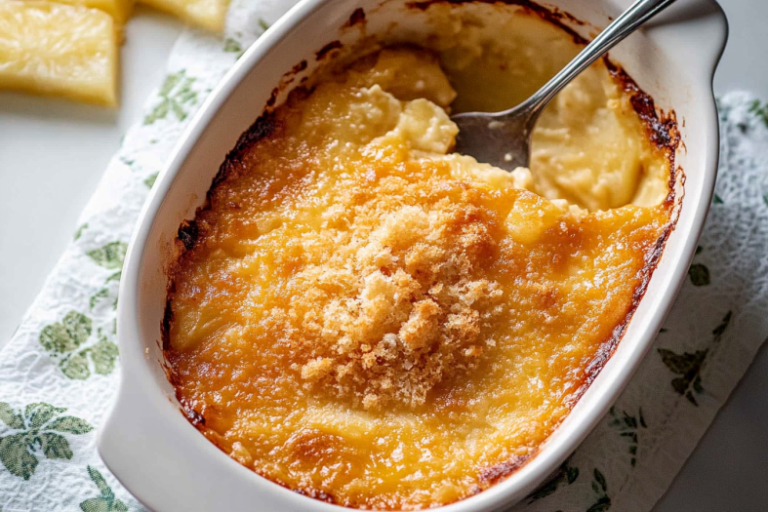Why Did Egg Bagels Start to Disappear?
Growing up in a New York deli, I remember the warm, golden glow of egg bagels. They seemed to tell a story with every bite. Those rich, yellow-tinted traditional bagels weren’t just bread—they were a connection to generations of culinary heritage. As bakeries slowly phased out egg bagels, something magical began to fade from our breakfast tables.
The disappearance of egg bagels represents more than a simple shift in baking trends. It’s a narrative of cultural transformation, where traditional recipes gave way to mass production and changing consumer preferences. These unique bagels, once a staple in delicatessens across America, gradually lost their prominence in the competitive bread market.
Understanding why traditional egg bagels vanished requires exploring their rich history, economic pressures, and the evolving tastes of modern consumers. Their journey reflects broader changes in food production and cultural dining experiences.
Key Takeaways
- Egg bagels represent a significant piece of culinary heritage
- Cultural and economic shifts impacted traditional bagel production
- Mass manufacturing changed bread-making techniques
- Consumer preferences dramatically transformed bakery offerings
- Nostalgic food traditions often face challenges in modern markets
The Rise and Fall of the Classic Egg Bagel Tradition
Egg bagels are a tasty part of Jewish bakery traditions that changed American deli culture. These golden-yellow breads came from Eastern European Jewish immigrants. They brought a special flavor and texture to bakeries in the United States.
The history of egg bagels is about keeping traditions alive and making new ones. Jewish bakers brought their old recipes to America. Adding eggs made the bagels softer and richer, becoming a favorite in cities.
Origins in Eastern European Jewish Communities
In the old country, bakers knew eggs were special in baking. They used eggs to:
- Make bread richer
- Get a softer crumb
- Add more nutrition
- Improve taste
Peak Popularity in American Delis
In the mid-20th century, egg bagels were at their peak. New York delis and bakeries everywhere loved these golden treats. The bright yellow color showed they were high-quality and true to Jewish-American food.
Cultural Significance of Yellow-Hued Bagels
Egg bagels were more than breakfast food. They stood for community and connection. They were a link between old traditions and new chances. Each bite shared stories of immigration, change, and creativity in the American immigrant story.
The Evolution of Modern Bagel Production
The bagel industry has seen big changes in recent years. Commercial baking moved to faster, more efficient methods. This changed how we get our favorite breakfast food.
Now, bakeries make bagels on a large scale. They found ways to make more bagels cheaper and faster. This change affected the taste and variety of bagels we can buy.
Transition to Industrial Manufacturing
Bakeries started making bagels on a big scale, focusing on speed and cost. Artisan methods were replaced by machines that make thousands of bagels quickly and affordably.
- Reduced labor costs
- Standardized product sizing
- Increased shelf life
Cost-Effective Alternative Ingredients
Bakeries started using cheaper ingredients instead of the traditional ones. Egg bagels, once a special treat, became too expensive to make in large quantities.
Changes in Commercial Baking Practices
Today, bagel making uses technology and efficiency. Machines do the mixing, proofing, and baking, making products fast and consistent. *Quality is now less important than making lots of bagels*.
The bagel changed from a handmade treat to a common product.
Changing Consumer Preferences and Health Trends
The way people eat bagels has changed a lot in recent years. More people now think about their health when choosing breakfast. This has made big changes in the bagel market, especially for egg bagels.
People want to eat healthier in the morning. They look for healthier bagel options that fit their health goals. Bakeries are making new products to meet this demand for less calories and cholesterol.
- Reduced fat content becomes a primary consideration
- Whole grain and protein-enriched options gain popularity
- Gluten-free and low-carb alternatives emerge
New diets like keto, paleo, and plant-based are changing bagel recipes. Bakeries must now make bagels for these diets. This means fewer egg bagels, as they don’t fit these new health trends.
Younger people are leading this change in eating habits. They want food that’s good for them and know what’s in it. This has made egg bagels less popular, turning them into a nostalgic treat for many.
The Impact of Plain Bagel Popularity
The bagel industry saw big changes due to new tastes and trends. Plain bagels became more popular as people looked for simple, versatile foods. Bakeries and consumers wanted options that everyone could enjoy.
Artisanal bagel shops changed the bagel world with new bread-making ways. These shops focused on:
- High-quality, small-batch production
- Authentic baking techniques
- Minimalist flavor profiles
Marketing Shifts in Bagel Industry
Bakery marketing changed to show off plain bagels’ pure nature. People started to prefer simple, genuine food choices. This led to a focus on traditional flavors in bagel products.
Rise of Artisanal Bagel Shops
Artisanal bagels became a big deal in food. These shops made unique, hand-made bagels using old baking ways. They drew in customers who wanted top-notch, local bread.
New Flavor Innovations
Even as plain bagels grew in popularity, bakers tried new flavors. They made everything from savory herbs to sweet desserts. This kept the bagel market fresh and fun for those who love to try new things.
Modern Revival Efforts and Specialty Bakeries
The egg bagel tradition is seeing a big comeback in the U.S. Small bakeries are diving back into making egg bagel recipes with passion. They’re sticking to the old ways of doing things.
Specialty bakeries are at the forefront of this egg bagel revival. They’re updating classic recipes for today’s tastes. They mix old techniques with new methods, making egg bagels that are both traditional and appealing to today’s food lovers.
Looking into modern bagel culture shows a love for hand-made, top-notch bread. Bakeries in big cities like New York, Chicago, and San Francisco are keeping the egg bagel alive. They show that this bread can still win over people with its unique look and taste.
The rise of egg bagels is part of a bigger trend towards artisanal food. As people look for real and meaningful food experiences, bakeries are key in keeping this bread tradition alive and evolving.
FAQ
Why did egg bagels become less common in bakeries?
Egg bagels fell out of favor due to changes in how they’re made. New, cheaper ways to produce bagels and a desire for healthier options led to their decline. Small bakeries couldn’t compete with the big guys anymore.
Are egg bagels still available today?
Yes, but they’re harder to find. You can still get them at specialty bakeries and some old-school delis. These places stick to traditional methods.
What makes egg bagels different from regular bagels?
Egg bagels stand out because of their yellow color and richer taste. This comes from adding eggs to the dough. They’re softer and taste more complex than regular bagels.
How do health trends impact egg bagel production?
Health trends have made egg bagels less popular. People want foods with less fat and cholesterol. Egg bagels have more of these, so they’re not as appealing anymore.
Where did egg bagels originate?
Egg bagels come from Eastern European Jewish communities. They were a big part of Jewish food culture. They became a hit in American delis in the mid-20th century.
Can I make egg bagels at home?
Absolutely, you can make egg bagels at home. Just add eggs to your usual bagel recipe. This will give you a richer, softer bagel with a unique taste.
Why do artisanal bakeries prefer plain bagels?
Artisanal bakeries love making plain bagels. They focus on traditional recipes and new flavors. Plain bagels let them highlight their skills and quality ingredients.
Are egg bagels more expensive?
Usually, egg bagels cost a bit more. This is because of the extra eggs and the extra effort needed to make them. They’re pricier than regular bagels.






